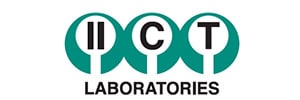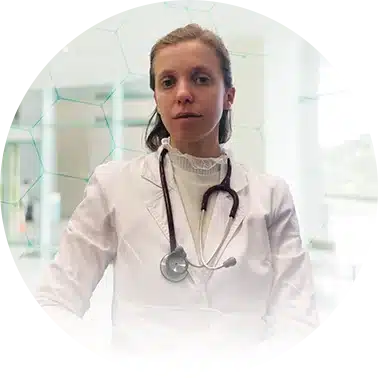CONTACT
We will reply as soon as possible.
Enevia Health, LLC
30 N Gould Ste N, Sheridan, WY 82801, USA
Bioanalytical test performed with highly sensitive LC/MS/MS ion trap technology to detect and quantify mycotoxins.
Mycotoxins are toxic chemicals that are present in spores and small mold fragments that are released into the air and dust.
Mycotoxins detected by this test:
AFLATOXINS:
Aflatoxins, a family of fungal strains that affect plant products, have been linked to liver cancer, hepatitis, cirrhosis and other health problems. Consuming contaminated plant products, eating meat or dairy products from animals fed contaminated food, or inhaling dust while working with contaminated products results in exposure.
Aflatoxin B1: The main metabolite of aflatoxin B1, a mycotoxin produced by many species of the genus Aspergillus, is aflatoxin M1 (AFM1). Some of the most cancer-causing elements in the environment are aflatoxins. Age, sex, and diet are just a few of the many variables that affect an individual's vulnerability to aflatoxin. Beans, corn, rice, nuts, wheat, milk, eggs, and meat contain the toxin aflatoxin. Human tissue samples have shown aflatoxin in cases of pulmonary aspergilloma. Aflatoxin can damage the liver, cause cancer, affect mental function, cause bleeding in the abdomen, create coma, and even cause death. Aflatoxin has been shown to inhibit leukocyte proliferation. Nonpruritic macular rash, headache, gastrointestinal dysfunction (sometimes severe), lower extremity edema, anemia, and jaundice are some of the clinical indications of aflatoxicosis. When ochratoxin and zearalenone are present, the toxicity of aflatoxin is amplified.
Aflatoxin B2: The fungi Aspergillus flavus and Aspergillus parasiticus produce aflatoxin B2. It is also a toxin and carcinogen that contaminates food, mainly affects the liver and kidneys, and enters the body through the lungs, mucous membranes (nose and mouth) or even the skin, but is less potent than aflatoxin B1. .
Aflatoxin G1: G1, like the other aflatoxins, is derived from a soil-borne fungus that contaminates a wide range of food products, including peanuts, cottonseed meal, oilseeds, vegetable oils, corn, and others. grains used in human and animal food. . Aflatoxin contamination is more common in humid environments, particularly in tropical and subtropical areas.
Aflatoxin G2: Despite being the least toxic aflatoxin, G2 is still harmful to humans and animals. Although less lethal than other aflatoxins, G2 can cause liver problems (including cancer, chronic hepatitis, and jaundice) and appears to be involved in Reye's syndrome. Like all aflatoxins, it can have a negative impact on the immune system.
TRICOTHECENES
This group of mycotoxins contains approximately 170 different toxins that are produced by at least five different types of fungi. Some contaminate plants such as cereals, fruits and vegetables. Others thrive in soil and decaying organic matter. Stachybotrys chartarum, also known as black mold, is known to produce several types of trichothecenes.
Satratoxin G: While all trichothecenes are extremely toxic, testing has revealed that Satratoxin G is the most dangerous to humans and animals. The dark mold Stachybotrys chartarum produces a variety of trichothecenes, but Satratoxins G and H are more abundant than other toxins.
Satratotoxin H: While not all strains of black mold (Stachybotrys chartarum) produce mycotoxins, those that do typically produce multiple types, including Satratoxin H. Mold can be found on some agricultural materials, as well as in damp or weather-damaged environments. Water. Mold appears to be a serious problem in North America, according to the evidence.
Isosatratoxin F: Isosatratoxin F, another trichothecene mycotoxin produced by Stachybotrys chartarum, is one of the contributors to “sick building syndrome,” in which the health problems of building occupants are directly related to the time they spend in the building. buildings infected with mold. According to a 1984 World Health Organization Committee report, up to 30 % of new and remodeled buildings are potential sources of health problems due to poor air quality.
Roridin A, like other macrocyclic trichothecenes, is produced by molds and has been linked to a variety of acute and chronic respiratory tract health problems. Experiments have shown that Roridin A can cause nasal inflammation, excess mucus secretion, and damage to the olfactory system.
Roridin E – Roridin E, The mold genera Fusarium, Myrothecium, Trichoderma, Trichothecium, Cephalosporium, Verticimonosporium, and Stachybotrys produce roridin E, a macrocyclic trichothecene (i.e., black mold). Trichothecenes are usually discovered in water-damaged structures, but can also be found in contaminated grains. This extremely poisonous substance prevents the activity of peptidyl transferase, which decreases protein formation. Trichothecenes have been used in biological warfare because they are believed to be particularly poisonous. Macrocyclic trichothecenes are known to induce significant brain damage, immunosuppression, endocrine disruption, cardiovascular problems, and gastrointestinal distress even at moderate exposure levels.
Roridin H: Affecting human and animal health similarly to other trichothecene mycotoxins, Roridin H is produced by mold, specifically Stachybotrys chartarum, which grows well on many wet building materials such as wood fiber, bards, roof shingles, paneling. of plaster damaged by water. and air conditioning ducts.
Roridin L-2: Molds, including black mold, produce this mycotoxin. However, environmental tests do not always detect Stachybotrys because its spores are large and heavy and do not disperse easily in the air. Unfortunately, mycotoxin molecules, including the highly toxic Rorodin l2, are lightweight and easily airborne, allowing them to be inhaled by building occupants.
Gliotoxin: Aspergillus fumigatus, the most common cause of mold illnesses in humans, produces gliotoxin, a mycotoxin that suppresses the immune system. A. fumigatus, found in many homes and buildings, usually infects people with weakened immune systems, but can be fatal: in immunocompromised people, invasive aspergillosis (IA) is the leading cause of death.
One of the most common mycotoxins contaminating foods is ochratoxin A (OTA), a toxin produced by several species of Aspergillus and Penicillium. It is also a common contaminant in heating ducts and water-damaged homes. Inhalation can also cause exposure in water-damaged buildings.
Source of mycotoxins
ASPERGILLUS
Aspergillus is the most common mold in the environment. Damage to crops and livestock has cost billions of dollars. Aflatoxin and ochratoxin are two of the most common Aspergillus mycotoxins. The liver is the main target of these toxins. These toxins have been discovered in peanuts, corn, cotton, millet, rice, sorghum, sunflower seeds, wheat, and a variety of spices. They have also been discovered in eggs, milk and meat from animals fed contaminated grains. Aspergillosis refers to diseases caused by Aspergillus. The respiratory system is the most common entry point for infection. When Aspergillus mold colonizes the lungs and forms a granulomatous disease, it can cause severe asthma.
PENICILLIUM
More than 200 species of Penicillium have been discovered. The most common of these species is Penicillium chrysogenum. It is commonly found indoors and is the source of many allergic reactions. Penicillium is also a known contaminant in a variety of foods. Penicillium can contaminate many different types of citrus fruits, but it can also contaminate seeds and grains. Penicillium's ability to thrive in low humidity conditions is one of the reasons it is such a common pest. Penicillium can be found in wallpaper, carpets, furniture, and fiberglass insulation in the home. Ochratoxin is the most common mycotoxin produced by Penicillium (OTA). Ochratoxin is a nephrotoxic substance, meaning it damages the kidneys. It also causes cancer.
STACHYBOTRYS
Stachybotrys is a greenish-black mold. This mold can grow on cellulose-rich, nitrogen-deficient materials such as drywall, paper, fiberboard, and shingles. Stachybotrys is well known for producing extremely toxic macrocyclic trichothecene mycotoxins. Stachybotrys produces two of the most common mycotoxins: roridin E and verrucarin. In addition to mycotoxins, the fungus produces nine phenylpyrodrimanes and cyclosporine, both powerful immunosuppressants. These immunosuppressants, together with trichothecene mycotoxins, may be responsible for the high toxicity of Stachybotrys.
FUSARIUM
Fusarium mycotoxins include zearalenone (ZEN) and fumonisin. Temperate climates are ideal for the growth of Fusarium fungi. They grow at lower temperatures than Aspergillus. Fusarium grows on a variety of grains, including corn and wheat, throughout the world. Exposure to Fusarium mycotoxins can have both acute and chronic consequences. Abdominal pain, general malaise, diarrhea, emesis and death are possible symptoms. ZEN has estrogenic properties and has been linked to reproductive problems.

You have to contact the collaborating entity you want from your country:
Argentina:
Laboratory IICT LABS
Autism Bioapproach Foundation
Ecuador:
Doctor Oscar Castro
Peru:
GFG Laboratory
Uruguay:
Doctor Antonella Fanetti

ARGENTINA
Laboratory IICT LABS
1220 Miter Street
S2000BHX
ROSARY BEADS
SANTA FE, ARGENTINA.
+543414484517
www.iictlabs.com
iict@iictlabs.com
CUIT: 33-70874216-9
Contact person:
Coordinator Franco Pongelli
+543413201729
fpongelli@iictlabs.com

PERU
GFG Laboratory
El Sauzal Passage. 105 Urb. Los Sauces
(Alt. block 8 av. 8 av. Villarán)
Surquillo, Lime
Peru
+51 989 692 828
Contact person:
Coordinator of Enevia Health in Peru Giovanna Bejerano
+51 983 514 369
Address of attention: Av. Benavides 2426 office 202 Miraflores. Lima 15048
Opening hours: Wednesdays 10:30 am to 12:30 pm.

URUGUAY
Doctor Antonella Fanetti De La Hoz
Office address:
Contact person:
Doctor Antonella Fanetti De La Hoz
Contact number: +598 99 728 557
Mail: antonellafanetti@gmail.com
Hours: 9:00 AM to 3:00 PM

ECUADOR
Doctor Oscar Castro
Contact person:
Enevia Health Coordinator in Ecuador: Doctor Oscar Castro
Mail: nutraautism@gmail.com
Schedule: 09:00 to 20:00

ARGENTINA
Autism Bioapproach Foundation:
Department 1ºC
Juan Agustin Garcia 2780
(1419) Villa, Santa Rita.
CABA, Argentina
Reports: autismobio@gmail.com
+54 11 6825-8726
Studies: bioabordajesdelautismo@hotmail.com
+54 11 5062-0709
Contact person:
adriana peralta
Biomedical nutritional advice
Master of Disability
President of the Autism Bioapproach Foundation.
We will reply as soon as possible.
30 N Gould Ste N, Sheridan, WY 82801, USA
Our groups are the ideal platform to learn and share your scientific concerns about neurodevelopment issues
*Our purpose is informational only, it is not intended to be a substitute for medical advice, diagnosis or treatment.

This plan is exclusive for people who are responsible for or suffer from some neurodevelopmental pathology such as (TEA, ADD, ADHD, OCD, SLI and other learning disorders, as well as Rett syndrome, Tourette syndrome, PANS, PANDAS , LYME…
With this plan you can benefit from discounts on more than 100 laboratory tests, medical visits, supermarkets and therapies and you will have access to all the tests with the BIGGEST possible discount.
Enevia Health, following its commitment to health and well-being, has created another membership designed for all those people who need these tests and want to benefit from the facilities offered by Enevia.
Subscribe to our HEALTH PLAN and start enjoying the advantages we offer you.
In this modality you will NOT pay annual membership, you will be able to buy on our website but you will not be able to benefit from the discounts that those people subscribed to one of our plans have.
We are working on our website. For any queries, you can contact our customer service team at atencionalcliente@eneviahealth.com